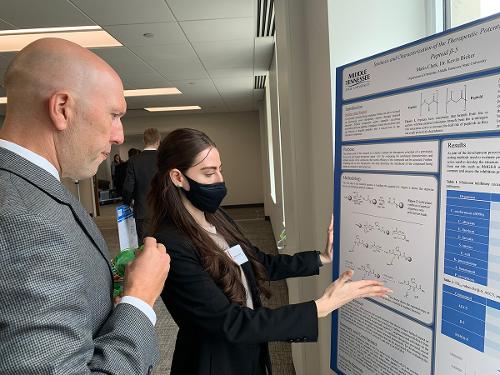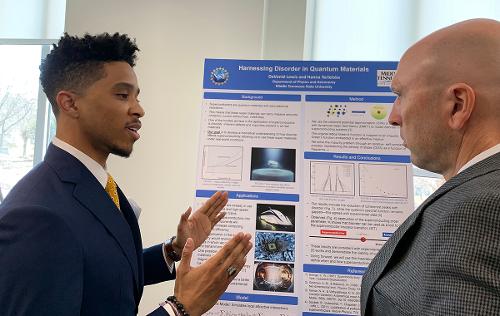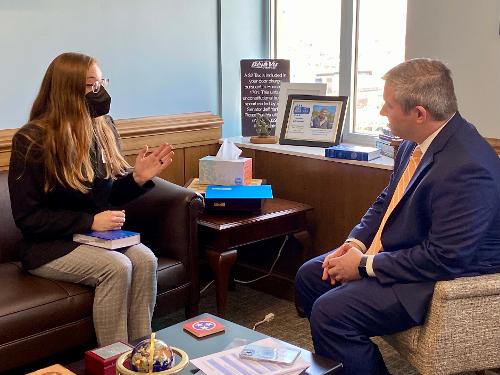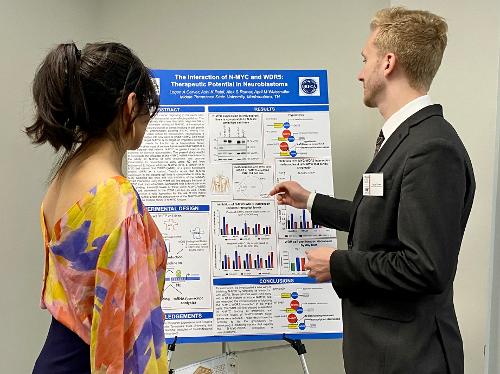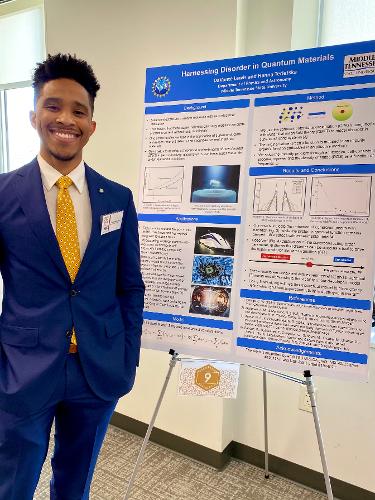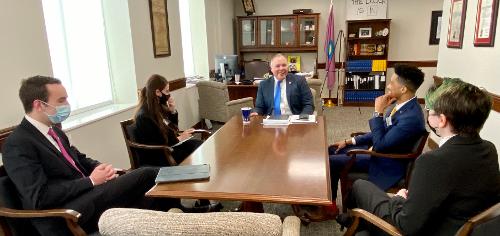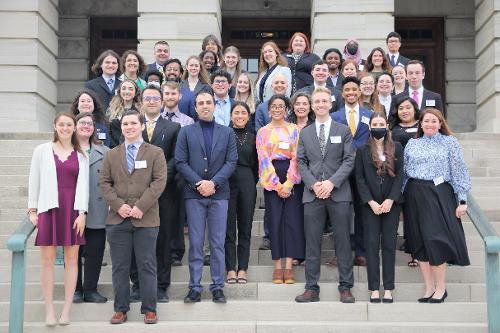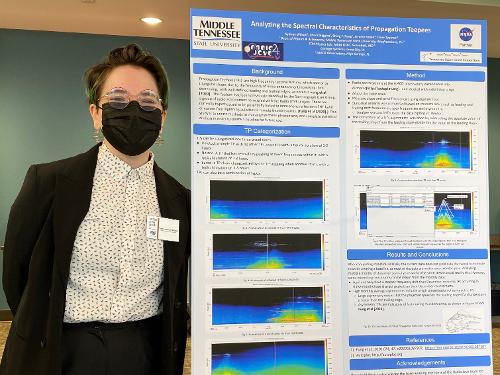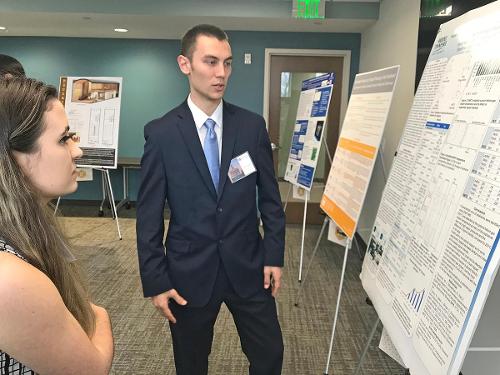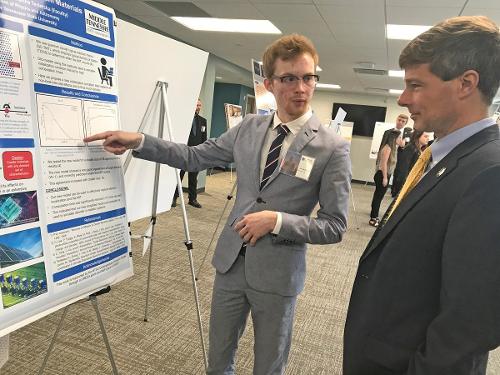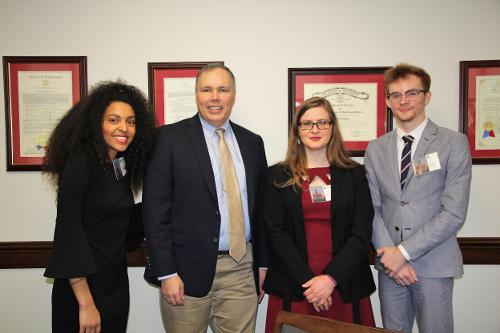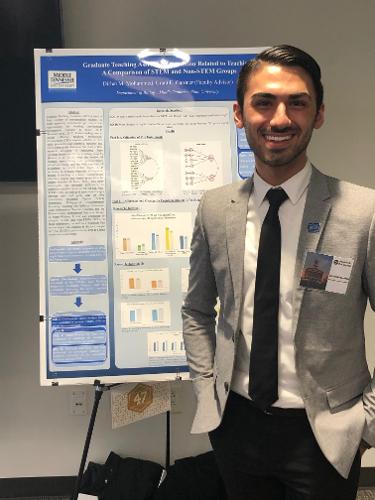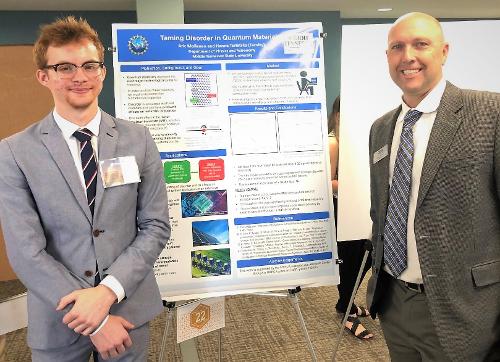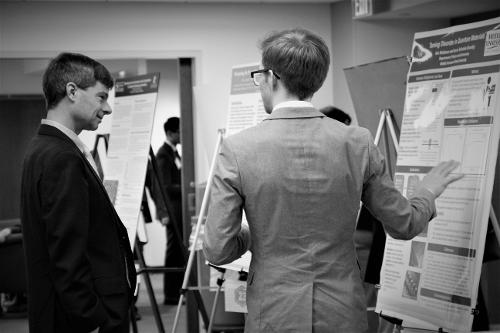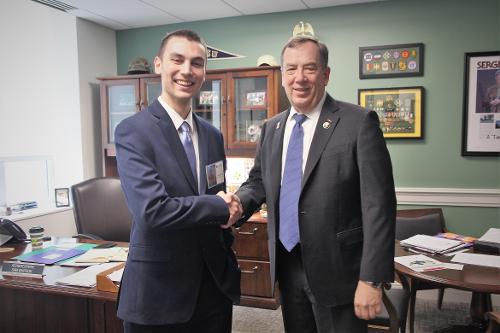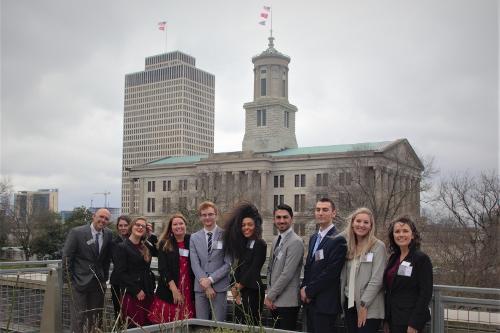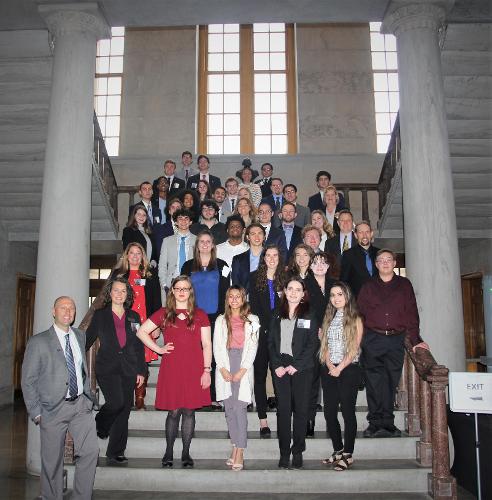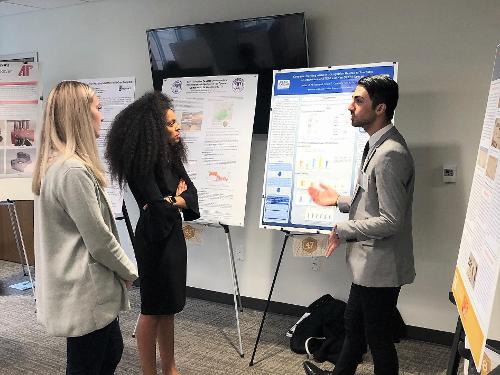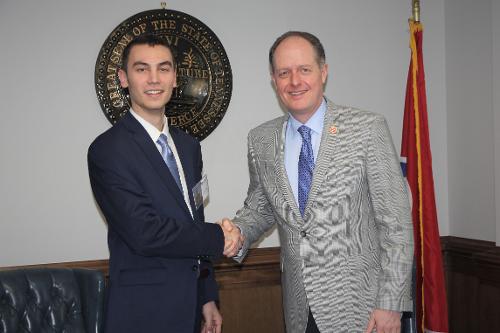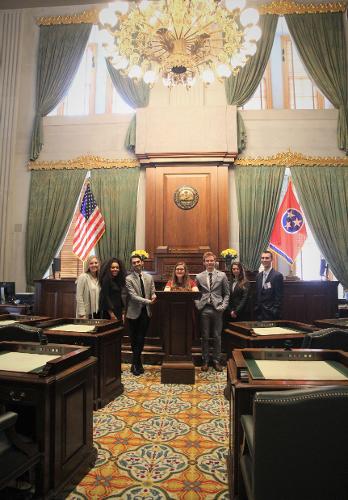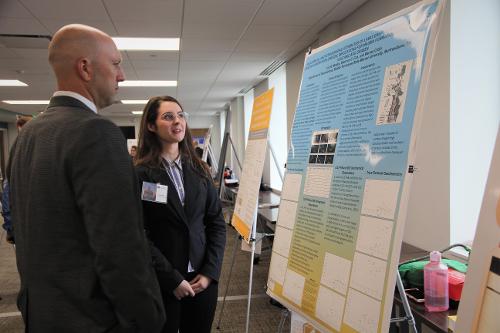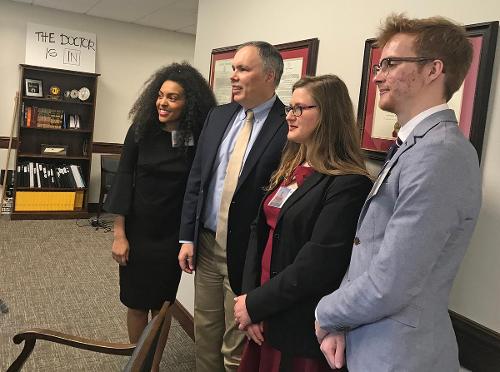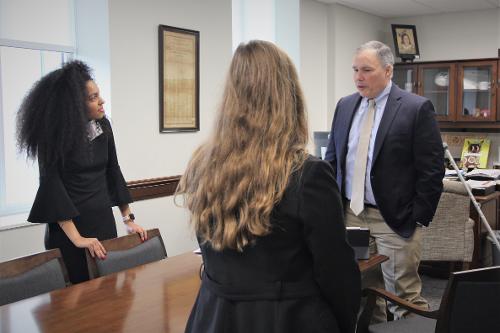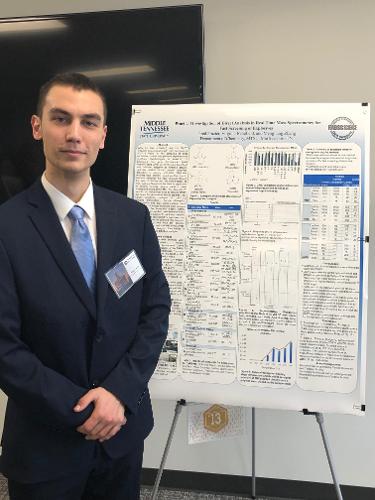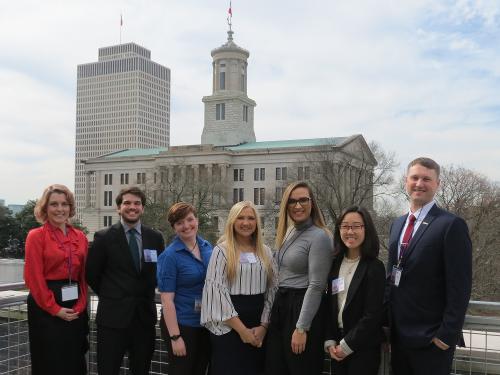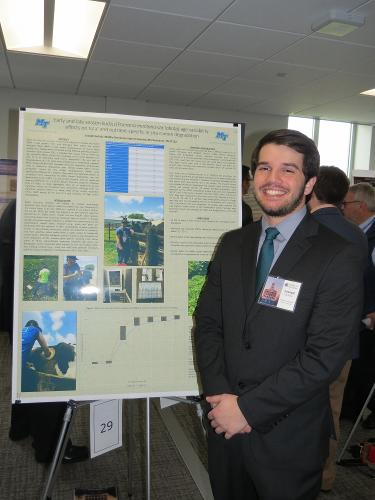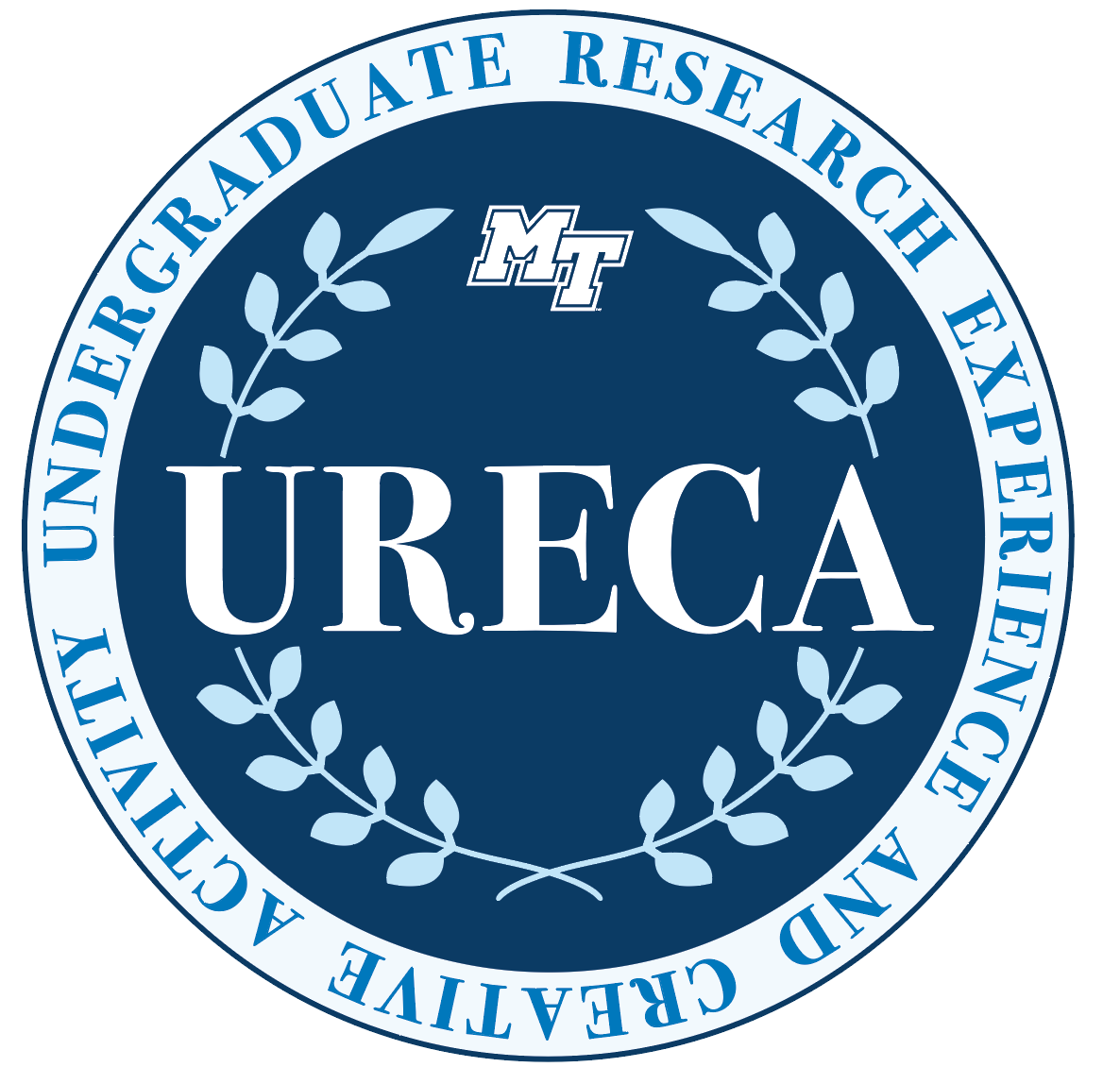Posters at the Capitol
Posters at the Capitol is a prestigious annual event, during which selected MTSU students
present their research to state legislators at the Tennessee State Capitol alongside
undergraduate representatives from other participating Tennessee universities. Sponsored by the Tennessee STEM Education Center, the event showcases research from within
STEM fields.
MTSU's 2024 Selected Participants
 Audrey Lauerhass
Audrey Lauerhass
Examining the Utility of Spatial Analysis of Artifact Distribution at a World War
II Aircraft Crash Site
Faculty Mentor: Dr. Tiffany Saul
Hometown: Murfreesboro, TN
Abstract: At aircraft crash sites, the use of geographic information system (GIS)
mapping technologies can allow for a greater spatial understanding of aircraft wreckage
(ACW) distribution and improve the recovery of human remains. Creating predictive
models assists with concentrating efforts and resources in areas likely to contain
material of interest. At a World War II crash site, portions of the roughly 450 x
350 meter site were systematically scanned via metal detection, sampled, and documented.
All ACW was analyzed based on its original location on the aircraft. The coordinates
of positional ACW and the number of metal detection hits were entered into ArcGIS
Pro with other spatial data. The creation of a detailed distribution map of the aircraft
debris field guided excavation strategies in the third year of the recovery project
and demonstrated that spatial analysis of large aircraft crash sites is an effective
tool for maximizing resources for successful recoveries.
 Isaiah Kam
Isaiah Kam
Extraction of sweet wormwood (Artemisia annua L.), a medicinal plant, and evaluation
of its terpene content
Faculty Mentor: Dr. Ying Gao
Hometown: Murfreesboro, TN
Abstract: Employed to manage fungal diseases, synthetic fungicides have occupied the market due
to their accessibility and standardized usage. With the demand for a sustainable alternative,
botanical fungicides became implemented into agricultural sectors. This study was
aimed to promote further research on the medicinal plant, Artemisia annua L., also
known as sweet wormwood, and how its bioactive compound, terpene, can be maximized
and contribute to a larger botanical fungicide project. Known for their antifungal
and antimicrobial properties, various extraction methods were implemented to maximize
the biological properties of terpenes. These methods include Microwave-assisted extraction,
Sonication-assisted extraction, and Soxhlet extraction. For the experiments, various
solvents such as DI water, ethanol, and hexane were tested. These samples were then
tested with the α, α-diphenyl-β-picrylhydrazyl (DPPH) method to determine the antioxidant
capacity of the extracts. The samples will be tested for their antifungal activity
against Alternaria alternata using the agar dilution assay. Following the extractions
Liquid Chromatography Mass Spectrometry (LC-MS) analysis will be performed to analyze
the terpene molecules within the extracted samples. Providing new insights into future
studies of sweet wormwood, the results of this study have enlightened our understanding
of the compound, terpene, and what extraction method yielded the most efficient result.
 Rose Gutierrez
Rose Gutierrez
Electromagnetic Ionization and Radiation Creation in Neuroblastoma Cancer Cells
Faculty Mentor: Dr. Daniel Erenso
Hometown: McMinnville, TN
Abstract: Neuroblastoma is a common childhood cancer that has one of the highest incidence
rates for children less than one year with poor prognosis as children age. Although
current radiotherapy treatments are efficient, many patients are left with unpleasant
side effects. Laser trapping is a technique that traps dielectric objects as small
as an atom and as big as 100 micrometers with a high-power laser. The laser trapping
technique with the addition of magnetic beads was used in this study to initially
provide a more efficient treatment for neuroblastoma. This study determined that the
amount of radiation received in neuroblastoma cells through laser trapping was significantly
reduced. However, it was discovered that these neuroblastoma cells could produce radiation
emission, which lasted over six hours with a consistent amount of over 93% energy
absorption of an infrared light (low energy) resulting in intense visible radiation
(high energy light). Using infrared laser light with neuroblastoma cells and magnetic
beads has the potential to create a new source of energy of white light that has the
blackbody radiation. The overall result of this study has indication of improving
cancer treatment with significantly reduced radiation dose and also using cancer cells
for harvesting solar energy.
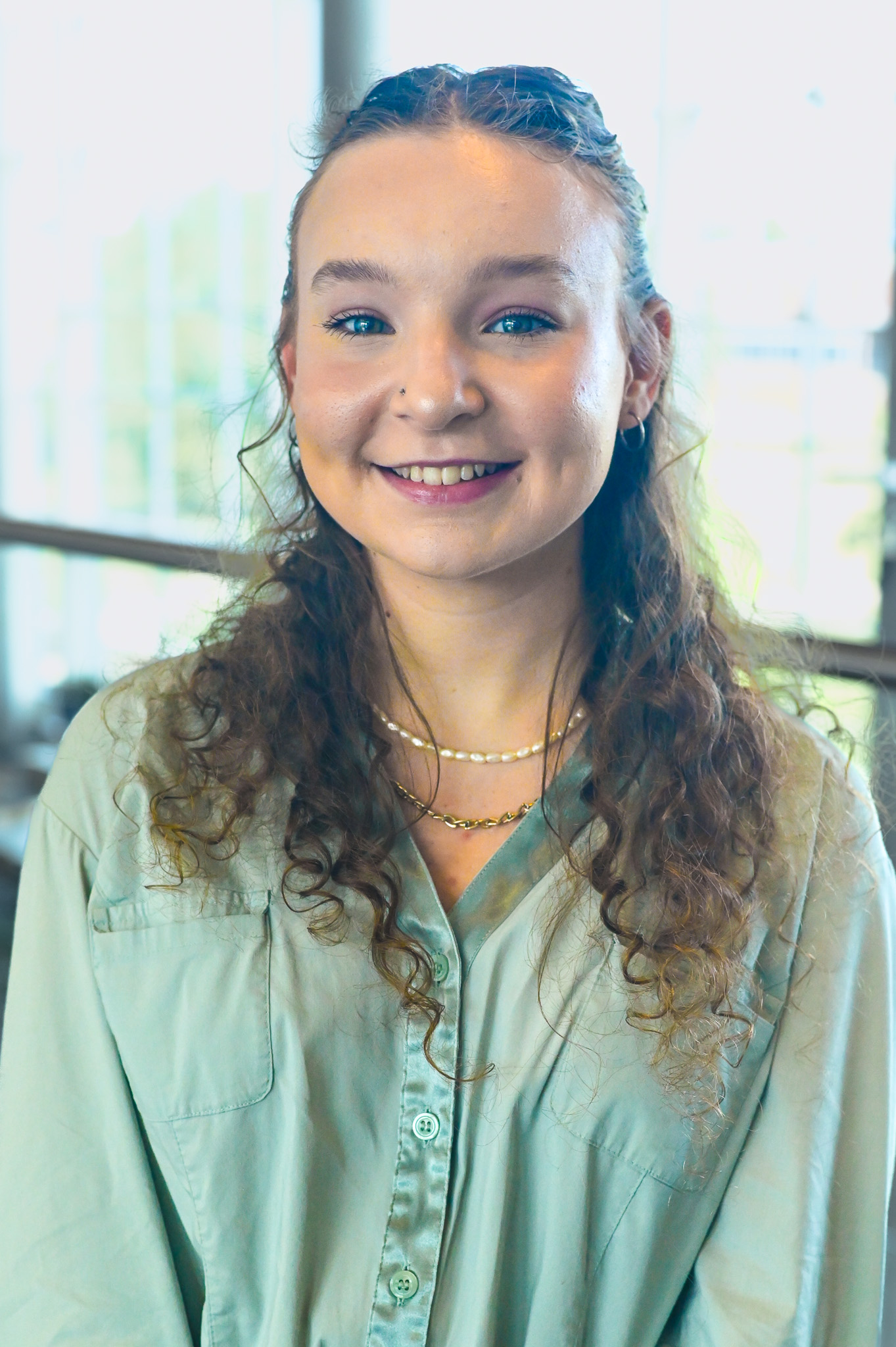 Eden Anderson
Eden Anderson
Detecting Estrogen Pollution in the Stones River Waterways using the Yeast Estrogen
Screen (YES) test of "Saccharomyces cerevisiae"
Faculty Mentor: Dr. Rebecca Seipelt-Thiemann
Hometown: Lebanon, TN
Abstract: Estrogen is a steroid hormone, most well-known as being associated with
the female reproductive system. Estrogen is used in the dairy and livestock industry
as a muscle enhancer and used to increase growth rates. Once in the environment, estrogen
enters the estrogen transmission chain, and the effects have been connected with disruptions
in waterway ecosystems. This study aims to identify the levels of estrogen pollution
for each site at the Stones River Watershed. Using the Yeast Estrogen Screen (YES),
"Saccharomyces cerevisiae" was scientifically engineered to carry one DNA (either
ERα or ERβ) sequence and two estrogen-responsive sequences (ERE). The ERE controls
the reporter gene, "lac-Z", which encodes for the enzyme β-galactosidase, and in the
presence of estrogens, is secreted. The lysis buffer contains chlorophenol red-β-D-galactopyranoside
(CPRG). When cleaved by β-galactosidase, it produces a colorimetric product. This
study distinguishes a practical way to identify said pollutions and promotes a better
understanding of what estrogen pollution can do towards biodiversity. The study also
confirms why testing our local Stones River Watershed is very important, as it improves
our ability to protect against threats towards biodiversity and possible contamination.
 Sydney Robbins
Sydney Robbins
Electrochemical Detection of Fenthion for Forensic Analysis
Faculty Mentor: Dr. Charles Chusuei
Hometown: Memphis, TN
Abstract: Fenthion is an insecticide that has been widely used to protect crops against
pests, however its toxicity has led to environmental and health concerns. Because
of the harms fenthion presents, the ability to rapidly and accurately assay this pesticide
is essential for forensic investigations of suicides, environmental violations, and
poisonings. Electroanalytical techniques have been shown to be advantageous in detecting
pesticides. Cyclic voltammetry is an electrochemical technique used to determine the
reduction and oxidation of analytes in order to identify unknown compounds. The efficiency
of cyclic voltammetry to detect trace amounts of fenthion is reportedly increased
with the use of nanoparticles to modify the electrode used. The electrocatalytic capabilities
of various nanomaterials drop-casted onto glassy carbon electrodes for fenthion detection
will be presented to provide a non-destructive, cost efficient, time sensitive, and
reliable method of fenthion detection that can be applied to forensic investigation,
environmental protection, and public health efforts.
 Cole Huddleston
Cole Huddleston
Biological Evaluation of Novel Tubulin Inhibitors for Treatment of Cancer
Faculty Mentor: Dr. April Weissmiller
Hometown: Goodlettsville, TN
Abstract: Cancer is a leading cause of death worldwide. Cancer cells are defined by
uncontrolled and abnormal cell division. Therefore, inhibiting cancer cell division
is a validated anti-cancer approach clinically. Both cell structure and cell division
depend on active microtubule dynamics, which is a process in which alpha and beta
subunits of tubulin polymerize and depolymerize. Small molecule tubulin inhibitors
are used in chemotherapy cocktails to treat various cancers, however current tubulin
inhibitors are toxic and cancer cell resistance can occur. To overcome these issues,
I have been part of a research project to discover novel tubulin inhibitors that target
the colchicine binding site on the beta subunit. Paneling of these novel small molecules
that are potential tubulin inhibitors reveals that out of those tested, two compounds
show the potential to inhibit tubulin polymerization directly and cause effects consistent
with tubulin inhibition in cancer cell lines. The data from this research will help
to understand which chemical structures function best to impair microtubule dynamics.
Design and testing tubulin inhibitors like these may be able to overcome issues with
those currently in the clinic and ultimately could be developed to aid patients in
their fight against cancer.
 Tori Bascou
Tori Bascou
Investigation of Water Effect on Ignitable Liquid Residue Analysis by Coupling Solid-Phase
Microextraction with Direct Analysis in Real Time Mass Spectrometry
Faculty Mentor: Dr. Mengliang Zhang
Hometown: Murfreesboro, TN
Abstract: Arson investigation and explosive analysis is a subfield of forensic science
that focuses on examining the physical evidence that is collected from a scene in
which a fire occurred. Accelerants and ignitable liquids (ILs) are often used in arson
fires to maximize the damage that the fire creates. Common ILs include lighter fluid,
kerosene, and gasoline, with gasoline being one of the most volatile compounds. Direct
analysis in real time-mass spectrometry (DART-MS) is known for its ability to analyze
volatile compounds that have been exposed to weather conditions and its ability to
demonstrate the sensitive detection of explosives. In recent research, the DART-MS
was coupled with an extraction method called Solid Phase Microextraction (SPME), in
order to aid in the analysis of IL residue on substrates (i.e., wood floor, paper).
This study hypothesizes that water could interfere with gasoline residue analysis
by DART-MS which is dependent on the gasoline to water ratios and the type of substrates.
The objective is to conduct a comprehensive evaluation of the water effect in gasoline
residue detection by DART-MS method and is expected to provide results that will aid
in the better understanding of water and substrates factors in the IL detection method.
 Lindsey Tran
Lindsey Tran
A Preliminary Study: Harvesting and Storing Electromagnetic Radiation using Animal
Blood and Micromagnetic Beads
Faculty Mentor: Dr. Daniel Erenso
Hometown: Antioch, TN
Abstract: Electromagnetic (EM) radiation, omnipresent in our surroundings, serves
diverse purposes from cellular communication to medical treatments and space exploration.
Our research explores a preliminary study utilizing laser-trapping, micromagnetic
beads, and animal blood for potentially revolutionizing EM energy harvesting and storage.
The livestock industry annually generates an excessive 1.4 billion pounds of waste,
primarily animal blood, representing a significant environmental concern. By utilizing
blood samples from key livestock animals, including sheep, goat, chicken, bovine,
turkey, horse, and porcine, our study produces enduring, self-sustaining EM radiation.
The experiment involves a 3:1 mixture of animal blood and micromagnetic beads on a
depression slide within an infrared laser trap, progressing through two phases: Plasma
formation and Star-like radiation. In Plasma formation, exposure to the laser trap
induces electric breakdown, ionizing blood cells and micromagnets, forming a dense
plasma. The subsequent Star-like radiation phase accelerates the dense plasma, generating
intense black-body radiation. The study attains 90-95% radiation energy absorption
over 1.5 to 7.5 hours, marking a micro-level advancement in EM harvesting with animal
blood. We envision this as a foundational step for macro-level applications like solar
energy harvesting, offering potential benefits for the environment through waste reduction
and enhanced safety in the livestock industry.

Ariel Nicastro
Ultrasound Forcing: Device Design and Applications in Neuromodulation
Faculty Mentor: Wolfgang Losert
Hometown: Franklin, TN
Abstract: Neuromodulation, the manipulation of neural activity using focused ultrasound,
is a growing interdisciplinary field with a major goal of noninvasively treating disorders
in the brain such as epilepsy, chronic pain, and migraines. In order to advance towards
these goals, it is crucial to study neural systems in isolation to directly observe
the impact of neuromodulation. For this reason, an ultrasound forcing device that
can create focused ultrasound waves was designed and assembled. This square-shaped
device fits inside a petri dish, and the vibration of its piezoelectric ceramic plates
when connected to a function generator creates waves that propagate through the medium.
We patterned microbeads in order to characterize the strength and spatial pattern
of the acoustic forcing. This ultrasound forcing device has been used in experiments
attempting to stimulate calcium activity in human neural progenitor cells, and can
be used to conduct further experimentation on neural networks.
Important Dates
Applications Open: Monday, October 30, 2023
Application Deadline: Friday, November 17, 2023
Notification Date: Monday, November 27, 2023
How To Apply To Present
The checklist of information needed to submit an abstract for Posters at the Capitol
includes:
Event Media Coverage
Posters at the Capitol 2023
On Wednesday, February 15, 2023, undergraduates from the nine Tennessee state universities
presented their research posters to legislators and guests at Nashville's Cordell
Hull Building. The students were selected to represent the best of the undergraduate
research at their own institutions.
The students selected for this prestigious event represent the best of undergraduate
research in STEM disciplines at their own institutions. Participating Universities include:
- Austin Peay State University
- East Tennessee State University
- Middle Tennessee State University
- Tennessee State University
- Tennessee Technological University
- University of Memphis
- The University of Tennessee at Chattanooga
- The University of Tennessee, Knoxville
- The University of Tennessee, Martin
Read event coverage from MTSU News.
MTSU's 2023 Selected Participants

Janna Abou-Rahma
Mechanism of Action of Antifungal Peptoids
Faculty Mentor: Dr. Kevin Bicker
Hometown: Carthage, TN
Abstract: Due to the rise of drug resistant strains of fungal pathogens such as Cryptococcus
neoformans and Candida albicans, there has been a need to identify new antifungal
agents. In comparison to naturally produced antifungal peptides, antifungal peptoids
mainly differ in structure, which prevents protease recognition giving higher bioavailability.
Previous studies have shown that peptoids are effective fungicides. RMG8-8 and RMG9-11,
two peptoids recently discovered in the Bicker Lab, have proven to be effective antifungal
agents against C. neoformans and C.
albicans, respectively. Reported here will be studies to determine the mechanism of
action and other vital therapeutic properties of RMG8-8 and RMG9-11 using various
biochemical and microbiological assays. Preliminary results of critical micelle concentration
testing indicate that RMG8-8 as well as RMG9-11 do not exist as micelles at their
minimum inhibitory
concentrations, but rather function unimolecularly. Using a parallel artificial membrane
permeability assay, it was found that RMG8-8 is likely unable to penetrate the blood
brain barrier. However, RMG9-11 demonstrated good permeability, indicating that it
may be able to penetrate the blood brain barrier to treat dangerous neurological infections
of fungi. Subsequently, assays will be conducted in order to further understand the
mechanism of action of both peptoid compounds to address the rising concern of drug
resistant strains of fungal pathogens.

Marzea Akter
Effect of Acute Oxytocin Administration on Social Behavior in Male and Female Mice
Faculty Mentor: Dr. Tiffany Rogers
Hometown: Murfreesboro. TN
Abstract: Oxytocin is a neurotransmitter and hormone with a well-established role
in prosocial behaviors in animals and humans. It is currently being tested in clinical
trials for the treatment of social symptoms associated with autism spectrum disorders.
However, the behavioral effects of oxytocin treatment have been variable with both
prosocial (increased empathy) and antisocial (increased competitiveness) behaviors
resulting in humans. Previous studies in our lab have shown increased anxiety-like
behaviors in mice treated chronically with oxytocin (1 12 ug dose per day for 14 consecutive
days, data unpublished). The current study aims to see the effect of
acute oxytocin administration on social behavior in male and female mice to determine
if the schedule of oxytocin administration affects behavioral outcomes. Adult C57BL/6J
mice will be acutely pretreated with saline or oxytocin (12 μg) an hour before the
behavior tests. Saline or oxytocin will be administered either intranasally (i.n.,
12 ug in 12 uL, 6 uL per nostril) or intraperitoneally (i.p., 12 ug in 120uL). Mice
will complete a battery of behavioral tests including the elevated plus maze (EPM),
three-chamber sociability task (3C), and free dyadic social interaction (FDSI) after
drug administration to determine changes in social behavior and anxiety-like behavior.
Noldus EthoVision XT and human coders will code anxiety-like behaviors, social preference,
and social novelty. I expect to find that acute oxytocin administration will increase
sociability as measured by the 3C and FDSI tasks while avoiding increases in anxiety-like
behaviors, as measured by the EPM task, associated with chronic administration.

Hunter Brady
Investigation of the Anti-viral Properties of Chlorine Dioxide Gas using the MS2 Bacteriophage
Faculty Mentor: Dr. Anthony Newsome
Hometown: Murfreesboro, TN
Abstract: Since the emergence of the SARS-CoV-2 virus, the etiological agent that
causes COVID-19, the need to identify antiviral agents for disinfection purposes has
dramatically increased. Chlorine dioxide gas has previously been identified as an
antibacterial agent with strong oxidizing capabilities. The MS-2 bacteriophage has
previously been identified as a suitable surrogate for the development and application
of virucide decontamination methods by the Environmental Protection Agency. This study
aimed to identify and assess the antiviral properties of chlorine dioxide gas and
to identify optimum physical conditions for potential deployment in support of current
antiviral disinfection needs. Using the MS-2 bacteriophage model system, preliminary
studies used the double-layer agar plaque assay technique to evaluate
the antiviral activity of chlorine dioxide gas. Results revealed up to a six-log (99.9999%)
reduction of the MS-2 bacteriophage off of porous surfaces. These results suggest
that chlorine
dioxide gas is a suitable antiviral agent.

Emaa Elrayah
Development of Size-Discrete PLGA Nanoparticles for Uterine-Targeted Drug Delivery
Faculty Mentor: Dr. Jennifer Herington
Hometown: Nashville, TN
Abstract: Preterm birth (PTB) is the leading cause of infant mortality, yet there
are no effective treatments. Current tocolytics have poor specificity and readily
cross the placental barrier, causing harm to both mother and fetus. Uterine-targeted
nanoparticles have emerged as a potential drug-delivery
system for the treatment of PTB. Poly(lactic-co-glycolic) acid (PLGA) is an FDA-approvedbiomaterial
with the capacity for use in obstetric therapies. Due to the size-exclusivity of the
placental barrier, the design of drug-encapsulated nanoparticles must consider particle
size. Here we show the development of a procedure to formulate monodispersed PLGA
nanoparticles with
discrete size populations. Using an oil-in-water emulsion technique adapted from Haycook,
et al (2020), we compared two different methods using either ethyl acetate (EtAc)
or dichloromethane (DCM) as the organic phase. Furthermore, we tested different homogenization
methods. We then developed a purification method using serial centrifugation to isolate
discrete size ranges. The nanoparticles were analyzed for size and polydispersity
via dynamic light scattering and verified via scanning electron microscopy. We found
that the DCM formulation produced particles with a lower polydispersity index (PDI)
than EtAc (0.20199 +/- 0.07 vs. 0.3037 +/- 0.03). We determined that homogenizing
the emulsion at 45 seconds produced the most discrete size populations, with low PDIs
(0.0813 +/- 0.0441). Here we show that we successfully employed a bench-top emulsion
to create and isolate PLGA nanoparticles within specific size ranges. This approach
holds strong potential for the development of a nanoparticle drug delivery system
for PTB, for which novel therapies are desperately needed.

Lacon Parton
Antibiotic Resistance eDNA in the Stones River Watershed
Faculty Mentor: Dr. Rebecca Seipelt-Thiemann
Hometown: Woodbury, TN
Abstract: From the beginning of antibiotic use, antibiotic resistance with associated
complications has been sweeping the nation. While bacteria can evolve antibiotic resistant
genes by repeated exposures, they can also acquire existing genes encoding antibiotic
resistance proteins by taking up environmental DNA fragments that originate from dead
antibiotic-resistant bacteria present in the environment. Alternatively, bacterial
viruses can carry antibiotic resistant genes which could
transfer the resistance through infection. It is important to identify and track valid,
local sources of antibiotic resistance genes in the environment as they represent
not only presence of resistance, but a source of acquiring resistance. The purpose
of this study is to track four
β-lactamase antibiotic resistant gene alleles (Bla-1, Bla-TEM, Bla-SHV, and BlaCTX)
in the Stones River Watershed and compare the prevalence to land uses that are known
to utilize antibiotics such as hospitals, veterinary clinics, and urban/agricultural
sites. Environmental DNA will be isolated from obtained soil samples. These soil samples
will be further cleaned inpreparation to perform polymerase chain reaction followed
by agarose gel electrophoresis which will determine the presence of the variants of
the β-lactamase antibiotic resistance genes. Acomparison of antibiotic resistance
gene allele presence/absence with land use will reveal if any particular land use
should be prioritized in the local battle against antibiotic resistance bacteria.

Jesse Scobee
Investigating the Significance of the N-MYC-WDR5 Interaction in Pediatric Neuroblastoma
Faculty Mentor: Dr. April Weissmiller
Hometown: Antioch, TN
Abstract: Neuroblastoma (NB) is the most common solid-tumor pediatric cancer, and
high-risk cases associated with N-MYC amplification show a 50% 5-year survival rate.
N-MYC is an oncoprotein transcription factor that causes the transformation of a healthy
cell into a tumor cell, and thus functional inhibition of N-MYC is a sought-after
therapeutic goal. Recently, the chromatin regulator WDR5 was discovered as an important
MYC co-factor that can modulate MYC target gene expression, and evidence in N-MYC
amplified NB cell lines shows extensive co-localization of N-MYC and WDR5 at genes
involved in multiple important biological functions. These data suggest that the N-MYC-WDR5
interaction may control a variety of important N-MYC related functions, however a
clear analysis focused on any single function individually is currently lacking. Thus,
this study was designed to determine if blocking the N-MYC-WDR5 interaction alters
expression of genes linked to apoptosis, a well-studied function of N-MYC. Using multiple
engineered NB cell lines, we performed mRNA analysis of pro- and anti-apoptotic gene
expression. Interestingly, results of this study reveal that blocking the N-MYC-WDR5
interaction does not cause overt changes in apoptotic gene expression, suggesting
that blocking the N-MYC-WDR5 interaction may not be sufficient to induce apoptosis.
However, future studies using different cell lines or alternative methods may be useful
to confirm these results. Given the extent of N-MYC and WDR5 co-binding at genes involved
in essential biological processes, future investigation is warranted to deduce the
totality of cellular consequences that occur when WDR5 cannot bind N-MYC in these
deadly malignancies.

Lindsey Tran
Creation of electro-magnetic assisted "Star-like" formation from cancer cells using
a laser trap
Faculty Mentor: Dr. Daniel Erenso
Hometown: Antioch, TN
Abstract: Cancer is the second leading cause of death among humans worldwide. Although
radiation therapy has been the most effective course of treatment for cancer patients,
it still has harmful and long-lasting damages on their bodies, ruining their quality
of life. The initial purpose of this study was to minimize radiation damage caused
from cancer treatment by finding the minimal amount of ionization required to eliminate
a single BT20 breast cancer cell, using laser-trapping (LT) technology. However, amid
experimentation, the discovery of two scientific phenomena
was made and given the titles "Dark-space" formation and "Star-like" formation. Both
phenomena have shown the ability to rapidly absorb and conserve energy. With the world's
continuing advancements in technology, these two discoveries can be used as an approach
to improve microchip technology and solar energy harvesting. Thus, the purpose of
this research
was expanded and separated into 3 phases: Single ionization, "Dark-space" formation,
and "Star-like" formation. A 3:1 mixture solution of BT20 cancer cells and magnetic
beads was poured onto a depression slide and placed onto the laser trap. For over
4 years, the same depression slide has been used to conduct measurements for each
phase. In the single ionization phase, magnetic beads were used to minimize the amount
of ionization required to eliminate a singular BT20 cell. It was found that the interaction
between the laser's radiation energy and the magnetic beads' electromagnetism accelerated
the rate of ionization. Thus, a significant reduction of approximately 83% was observed
in the ionization period with the addition of the magnetic beads. Further on to Phase
2, a "Dark-space" forms once the mixture interacts with the laser trap and acts as
an energy storage capacitor that rapidly expands as the increasing amount of radiation
energy is absorbed. This expansion causes all surrounding matter to accelerate towards
the dark region, yet it is never able to penetrate the space. Upon explosion, the
energy of "Dark-space" causes the surrounding matter to form into a plasma, acting
as a sea of positive and negative charges. Leading into Phase 3, a "Star-like" illumination
forms once the plasma interacts with the laser trap. This interaction causes an emission
of intense blackbody radiation that grows and becomes more robust as more energy is
absorbed. Overall, applications of this study can provide improvements in cancer treatment,
microchip technology, and solar energy harvesting.

Isaiah Osborne
S-Invertibility of Unicyclic and Bicyclic Graphs
Faculty Mentor: Dr. Dong Ye
Hometown: Chapel Hill, TN
Abstract: A graph is an abstract mathematical model of a network, which has vertices
and edges connecting vertices. Graphs can be used to model many networks, such as
the internet, social networks, and molecules. For example, if a vertex represents
an atom and an edge represents the bond between two atoms, then a graph can represent
a skeleton of a molecule; if a vertex represents a person and an edge represents a
relation between two persons, then a graph can be used to represent a social network.
Graphs can be represented mathematically using matrices, for example, the adjacency
matrix of a graph
with n vertices is an (n × n)-matrix whose ij-entry is the number of edges connecting
the vertex i and the vertex j. A graph is invertible if its adjacency matrix is invertible,
and a graph is considered s-invertible if its adjacency matrix is invertible and its
inverse is a matrix with each entry belonging to {−1, 0, 1}. While the concept of
s-invertibility was introduced in the 1980’s, there has been very little progress
toward characterizing s-invertibility of graphs. Buckley, Doty and Harary characterized
s-invertible trees in 1988, and Kalita and Sarma characterized a sub-family of unicyclic
graphs in 2021. In our research, we characterize s-invertible graphs based on feasible
paths that are defined as paths whose vertex-removal results in a subgraph with a
2-matching. This characterization provides a tool for us to completely determine the
family of s-invertible graphs with at most two cycles, which extends the results of
Buckley-Doty-Harary for acyclic graphs and Kalita-Sarma for a sub-family of unicyclic
graphs.

Jonathan Duke
Investigating Parameter Estimation and Tracking Functions Used in the Confirmation
of Autonomous Vehicle Radar Detections
Faculty Mentor: Dr. Jorge Vargas
Hometown: Joelton, TN
Abstract:Autonomous vehicles are required to perform in a variety of weather conditions
to ensure the safety of the consumers. RADAR sensors tend to be a cost effective and
reliable route for automotive engineers because they perform well in a variety of
weather conditions. RADAR is an acronym for Radio Detection and Ranging. RADAR works
by using an antenna to emit and receive electromagnetic waves. When the antenna emits
a signal, the power of that signal is completelydissipated into the environment. The
electromagnetic waves then return to the receiver after it undergoes multipath propagation.
Based on the environment surrounding the sensor, the electromagnetic wave will undergo
change in either frequency or intensity. The receiver can provide information about
the environment when compared to the emitted signal. There are several ways that these
electromagnetic waves can be emitted and received, and it is one of the defining characteristics
of a RADAR system. To explain further, Pulse RADAR measures the change in signal strength
to calculate distance while Continuous RADAR uses the difference in frequency of the
signals to calculate distance. Currently, one of the downsides with RADAR sensors
is that their performance lowers in high traffic areas, meaning more false detections
are made. Detections must be assigned to an object and class to make safe driving
decisions without the input of the consumer. Once these detections are recognized
and classified, they can be stored, discarded, or maintained depending on the parameter
estimation and tracking functions. Improving the quality of RADAR detections allows
for less false detections to be made, allowing for a safer driving experience for
the consumer.
Posters at the Capitol 2022
On Wednesday, February 16, 2022, undergraduates from the eight Tennessee state universities
presented their research posters to legislators and guests at Nashville's Cordell
Hull Building. The students were selected to represent the best of the undergraduate
research at their own institutions.
For more information on Posters at the Capitol including participating universities,
a tentative schedule, directions/parking information, and poster information, please
visit the TSEC website.
The students selected for this prestigious event represent the best of undergraduate
research in STEM disciplines at their own institutions. Participating Universities include:
- Austin Peay State University
- East Tennessee State University
- Middle Tennessee State University
- Tennessee State University
- University of Memphis
- The University of Tennessee at Chattanooga
- The University of Tennessee, Knoxville
- The University of Tennessee, Martin
MTSU's 2022 Selected Participants

Hunter Brady
Assessment of Antiviral Activity of Chlorine Dioxide Gas
Faculty Mentor: Anthony Newsome
Hometown: Murfreesboro, TN
Abstract: Since the emergence of the SARS-CoV-2 virus, the need to identify antiviral
agents to disinfect large areas has greatly increased. Chlorine dioxide (ClO2) gas
has previously been identified as an antibacterial agent with strong oxidizing capabilities.
The MS2 bacteriophage has previously been identified as a suitable surrogate for the
development and application of virucide decontamination methods. The purpose of this
study was to identify and assess the antiviral properties of ClO2 gas and to determine
optimum physical conditions for potential deployment in support of current antiviral
disinfection needs. Using the MS2 bacteriophage model system, preliminary studies
used the double-layer agar plaque assay technique to evaluate the antiviral activity
of ClO2 gas. Initial results support the use of ClO2 gas as an antiviral agent. Reduction
of up to six logs was observed with treatments of 200 ppm of ClO2 gas following overnight
treatment on a non-porous surface such as steel coupons. Lesser exposure times studies
were also effective in multiple log reductions of the MS2 bacteriophage. Studies are
now being directed at the ability to inactivate MS2 phage imbedded in porous surfaces
such as cloth. It has been determined that infective MS2 bacteriophage can be recovered
after being imbedded on a cloth substrate. This can serve as a basis to evaluate MS2
phage inactivation when imbedded in porous substrates such as cloth.

Logan Carver
The Interaction of N-MYC and WDR5: Therapeutic Potential in Neuroblastoma
Faculty Mentor: April Weissmiller
Hometown: Nashville, TN
Abstract: Neuroblastoma (NB) is a cancer originating in the nerve cells and the most
common extracranial tumor affecting children. The survival rate for high-risk NB is
less than 50%. High-risk NB is associated with increased activity of N-MYC, a transcription
factor that regulates thousands of genes involved in cell growth and metabolism. Unfortunately,
blocking N-MYC directly has failed to be a viable option for therapeutics, necessitating
a deeper investigation into new ways to inhibit N-MYC. One novel approach to target
NMYC is to target an important co-factor that N-MYC needs to function as a transcription
factor. Evidence in other types of cancers has revealed that WDR5 is a critical cofactor
that recruits N-MYC to genes known to be essential for biomass accumulation. The present
study sought to investigate the influence of the N-MYC-WDR5 interaction on the ability
of N-MYC to bind chromatin and promote transcription in neuroblastoma cells using
NB cell lines engineered to induce wild-type N-MYC (WT), a version of N-MYC that cannot
bind WDR5 (WBM), or a green fluorescent protein (GFP) as a control. Results reveal
that N-MYC expression in the induced cell lines is comparable to other N-MYC amplified
cell lines and that inhibition of the N-MYC-WDR5 interaction using the WBM cell line
reduces the level of N-MYC that binds chromatin. Consistent with a decrease in N-MYC
binding, transcript levels of these same N-MYC-WDR5 targets are decreased in the WBM
cell line as well. These results provide a solid foundation for the use of this model
system to further probe the consequence of the N-MYC-WDR5 interaction on multiple
facets of N-MYC function.

Maria Clark
Synthesis and Characterization of the Therapeutic Potential of Antifungal Peptoid
β-5
Faculty Mentor: Kevin Bicker
Hometown: Murfreesboro, TN
Abstract: C. neoformans is a pathogenic yeast species that is one of the leading causes
of Cryptococcal meningitis. This form of meningitis, which begins with the inhalation
of yeast spores, has a significant mortality rate of 81% percent, with high incidence
in those who are immunocompromised. Current antifungal treatments such as fluconazole
and amphotericin B have detrimental side effects, leaving a significant need for better
alternative treatments. Peptoids, which are mimics of the natural peptides found in
living organisms, exhibit beneficial characteristics such as protease degradation
evasion and therefore longer half-lives, offer an alternative route for antifungal
compound development. Peptoid compounds discovered in our own lab, such as β-5, must
be characterized by determining efficacy against pathogenic species such as C. neoformans
as well as the toxicity of the compounds in the presence of mammalian cells. Herein,
assays for determining these factors have shown that β-5 has low toxicity in several
mammalian cell lines and significant and rapid inhibition of C. neoformans. These
characteristics, which are linked to the compound's structure, suggest that future
investigation can focus on working to further enhance the compound's overall efficacy
through structural modification.

DaVonte Lewis
From superconductor to Anderson Insulator: harnessing disorder in quantum materials
Faculty Mentor: Hanna Terletska
Hometown: Camp Springs, MD
Abstract: Superconductors are 21st-century quantum materials that promise fascinating
technological and societal benefits once properly harnessed. One of the hurdles we
face towards that end is that of disorder: the inherent impurities and imperfections
that exist in all real materials. Recently, there has been significant progress in
the development of numerical tools capable of treating different ranges of disorder,
allowing for a more robust investigation into its effects on the spectral and conducting
properties of materials. In this work, using the in-house typical-medium theory of
the single-site attractive Hubbard model on a Bethe lattice, we aim to explore the
effects of strong disorder on superconductive properties. In particular, our focus
is the study of disorder induced Anderson localization and the associated superconductor-insulator
transition (SIT). We construct a phase diagram in the disorder and electronelectron
interaction parameter space and demonstrate how sufficiently strong disorder can destroy
superconductivity in materials. Studying this disorder-induced transformation of material
properties is not only of intellectual interest, but also paves the way for the use
of disorder as a means to tune material conductance—ultimately reframing disorder
as an exploitable design parameter rather than a limiting factor in the development
of novel quantum materials.

Sophia Taylor
Synthetic Organic Electrochemistry in Deep Eutectic Solvents
Faculty Mentor: Scott Handy
Hometown: Nashville, TN
Abstract: Electrochemistry is an increasingly well-known method of organic synthesis
due to its sustainability. Organic electrochemical synthesis requires an electrolyte,
or a salt, to facilitate charge transport in addition to a solvent. Both the electrolyte
and the solvent are sources of waste in an organic reaction and thus contribute to
its environmental impact. Deep Eutectic Solvents (DES) are increasingly well-known
recyclable liquids that contain salts as at least one of their components. The use
of DES as organic electrochemical solvents is explored for the first time. By performing
various allylations of aldehydes using different DES and electrode pairings and analyzing
percent yields of each round, reaction conditions are optimized. The recyclability
of the DES is also explored. It is discovered that DES are excellent solvents to use
for electrochemical allylations because each 2 mL of DES can be reused at least three
times. The combination of electrochemistry and DES yields a doubly green synthetic
reaction which can be replicated in many large-scale settings, such as the pharmaceuticals
industry. Doing so would minimize waste production and allow for reusable materials,
saving both money and the environment.

Carina Vazquez
Experimental Composition of Two Systems: Ring Resonator Structures and an Acoustic
Demultiplexer
Faculty Mentor: William Robertson
Hometown: Shelbyville,TN
Abstract: In this work, we experimentally investigated two acoustic systems: the Y-shaped
demultiplexer and the acoustic ring resonator. A demultiplexer separates and transmits
specific frequencies from a broadband input signal. The acoustic demultiplexer investigated
here is based on resonances created by sideattached waveguide stubs. The Y shaped
waveguide sent broad bandwidth sound along an input line. Two output lines with a
stub filter arrangement transmitted narrow bands of two different frequencies separated
from the broadband input. Ring resonators are widely used in optics as filters and
switches. Here we investigated the acoustic analog to the optical ring resonator.
The acoustic ring resonators consist of a circular waveguide attached tangential to
a straight waveguide. The ring waveguide has resonances whenever the path around the
ring equals an odd half-integer multiple of the wavelength. We showed that this phenomenon
can be used to create notch filters, add-drop filters, and broad acoustic bandgap
reflectors. The experimental results were in good agreement with numerical models
rendered in python and finite-element simulations using COMSOL.
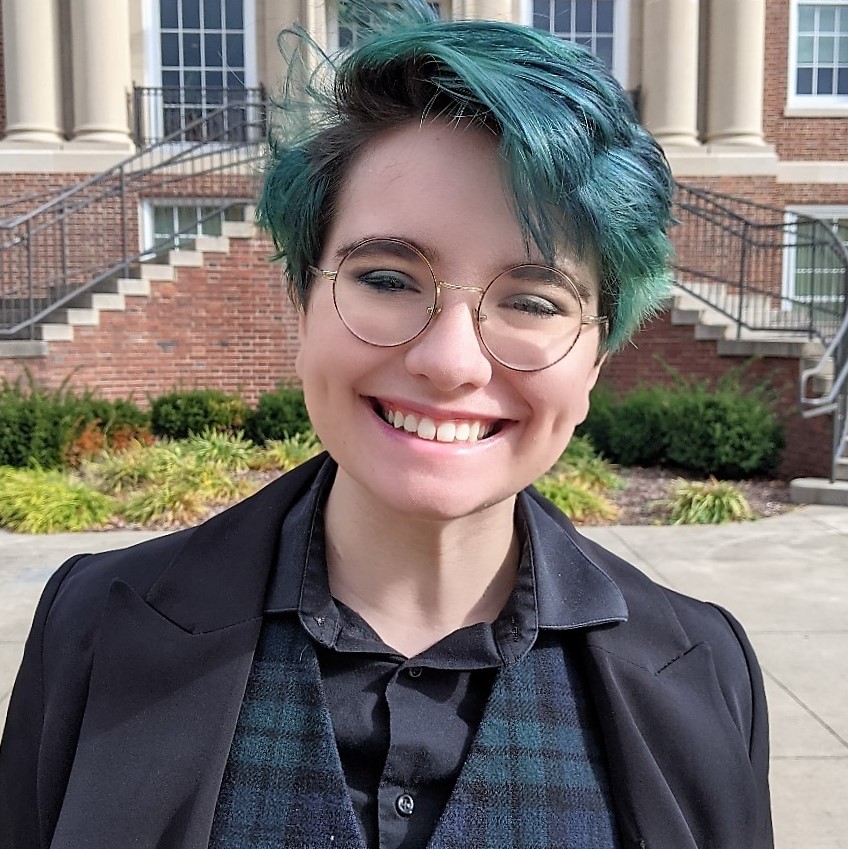
Sydney Wilson
Analyzing the Spectral Characteristics of Propagations Teepees
Faculty Mentor: Chuck Higgins
Hometown: Smyrna, TN
Abstract: A high frequency spectral feature has been previously identified in ground-based
spectrographs and recorded by a group of citizen scientists from the Radio JOVE project
(Fung et al., 2020 GRL, 47, e2020GL087307; https://doi.org/10.1029/2020GL087307). This feature is a teepee (TP) tent shape found in data between 15 to 30 MHz, where
the spectral enhancement frequency increases and then decreases with time, hence the
name (Figure 1). The presence of these features is currently being attributed to ionospheric
reflection of VHF emissions from lightning activities in remote thunderstorms. In
this study, we will analyze TP observations by studying their times (seasons) of occurrences,
duration, apex frequency, upper cutoff frequency drift rates, and quality, to better
understand these spectral features. Analysis was completed using the Autoplot software
(http://autoplot.org), and these characteristics and statistics are presented in order to gain a deeper
understanding of these peculiar spectral features.
Posters at the Capitol 2020
On Wednesday, February 26, 2020, undergraduates from the nine Tennessee state universities
presented their research posters to legislators and guests at the Tennessee State
Capitol. The students were selected to represent the best of the undergraduate research
at their own institutions. For 14 years, undergraduates have been presenting our state
legislators with their outstanding research results in a wide variety of academic
disciplines.
For more information on Posters at the Capitol including participating universities,
a tentative schedule, directions/parking information, and poster information, please
visit the TSEC website.
Participating Universities Include
- Austin Peay State University
- East Tennessee State University
- Middle Tennessee State University
- Tennessee State University
- Tennessee Technological University
- University of Memphis
- The University of Tennessee at Chattanooga
- The University of Tennessee, Knoxville
- The University of Tennessee, Martin
MTSU's 2020 Selected Participants

Aric Moilanen
Taming Disorder in Quantum Materials
Faculty Mentor: Hanna Terletska
Abstract:The discovery of new materials is a cornerstone of human civilization and
development. We live in the era of quantum materials which offer tremendous opportunities
for fundamental research and advances in new-generation technologies. Progress in
this field will enable energy efficient storage and transmission, faster and powerful
electronic devices, novel sensors, and quantum computers. Such research can bolster
economies, advance the quality of life, and address the unprecedented growth in global
energy needs. One essential part of such research is the accurate simulation and theoretical
modeling of these materials. However, the very same properties that make these materials
so useful also make them exceedingly difficult to simulate and understand. One major
obstacle is understanding the effects of disorder, or imperfections, in a material.
Disorder is ubiquitous in materials and can profoundly affect their properties and
functionality. The focus of our research is how disorder turns a conductor to an insulator
in a phenomenon known as the metal-insulator transition (MIT). Here, we propose a
new, greatly simplified model for identifying MITs in a disordered system that both
agrees with past simulations and significantly reduces computational complexity, bringing
us one step closer to better modeling and control of properties of quantum materials.

Lillian Beck
Correlation Between Mean Length of Utterances in Preschoolers and Different Maternal
Education Backgrounds
Faculty Mentor: Kathryn Blankenship
Abstract: Purpose: The purpose of this study was to measure the mean length of utterances
in typically developing preschool children and to identify whether maternal education
is an influential variable in morphological development. The study also researched
the relationship between mean length of utterance (MLU) and number of different words
(NDW).
Methods: 13 preschoolers between the ages of 3 and 5 were recruited to participate
in the study. To participate in the study, each participant had to be typically-developing
in the area of language, nonverbal cognitive abilities and hearing. This was assessed
using standardized measures. Then, a 15-minute language sample was taken and was analyzed
for MLU and NDW.
Results: The results of this study showed that there was a medium correlation between
MLU and maternal education and between MLU and NDW; however, statistical significance
was not reached. The results suggest that as maternal education increased (e.g., mother's
with higher levels of education) so did the length of MLU in the participants such
that the participants from higher maternal education families had longer MLUs. Additionally,
the results suggest that there is a relationship between NDW and MLU such that as
the participants who had larger NDW had longer MLU.

Jared Frazier
Practical Investigation of Direct Analysis in Real Time Mass Spectrometry for Fast
Screening of Explosives
Faculty Mentor: Mengliang Zhang
Abstract: While the direct analysis in real time (DART) ionization source coupled
with mass spectrometry (MS) is viable for the screening of trace explosives, current
and previous methods have significant disadvantages for screening of explosives. This
work demonstrates novel methods using DART-MS for the high-throughput and sensitive
detection of nineteen organic explosive residues in four different categories deposited
on several substrates. Explosive residues were selected based on their use in historical
bombings that have tragically claimed the lives of civilians and the armed forces
of many nations. To combat the threat of explosives to national security, several
methods were investigated using DART-MS. The QuickstripTM sample card method was used
to optimize DART gas heater temperature as well as dopants. Four sample introducing
strategies for DART-MS including transmission, thermal desorption, closed mesh, and
direct-insert methods were implemented to analyze liquid and dried samples deposited
on five substrates. Fabric, leather, metal, plastic, and synthetic skin were selected
to simulate realistic matrices for explosive residues. It was found that representative
explosives from each category could be detected with nanogram sensitivity and in less
than 1 O seconds. Therefore, the proposed methods using DART-MS provide prompt analysis
of explosives for forensic applications.
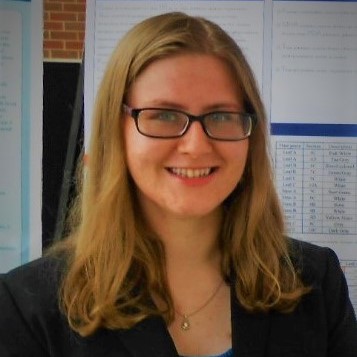
Kayley Stallings
Effect of Tea Brewing Temperature and Tea Concentration on the Microbial Profile of
Kombucha
Faculty Mentor: Keely O'Brien
Abstract: Kombucha, a fermented tea made with a symbiotic colony of bacteria and yeast
(SCOBY), has been touted as a health beverage for years. Previously, the health benefits
attributed to kombucha have been primarily anecdotal; however, as kombucha consumption
has increased, scientists are beginning to question what causes the supposed benefits,
with many researchers attributing the advantages to kombucha's microbial ecosystem.
Previous research examining kombucha produced with different types of tea demonstrated
many variations in the microbiome. Therefore, manipulating the amount of tea used
and the tea brewing methods may affect the microbiome of kombucha as well. This study
was conducted to determine how different kombucha production techniques - tea concentration
and steeping temperature - alter the kombucha's microbiome. For this project, kombucha
was made using varying concentrations of black tea and a range of brewing temperatures
to determine if either had an effect on the microbial profile. The teas were fermented
to the desired end-point and were then plated on selective agars to identify and quantify
the types of microbes present. The results of this study will provide further insight
into how different production practices affect the microbial profile of kombucha and
how that might translate to the wellbeing of the consumer.

Lily Medley
Geochemical and Petrographic Attributes of Lavas Erupted at Small Volcanic Centers
in Northern Oregon: Implications for Magma Formation Within an Intra-Volcanic Arc
Graben
Faculty Mentor: Warner Cribb
Abstract: Quaternary volcanism in the northern Oregon Cascade Range is dominated by
eruption of calc-alkaline andesite to rhyodacite lava flows and associated pyroclastic
deposits at long-lived, subduction-driven composite volcanoes, such as Mt. Hood and
Mount Jefferson. This study investigates small and more mafic Quaternary volcanoes
in the Mt. Hood vicinity, including Clear Lake Butte (CLB), Pinhead Buttes (PHB),
and Olallie Butte (OB). These volcanoes are located within an intra-volcanic arc graben,
which developed approximately 7-8 Ma to the south and propagated northward to the
Mt. Hood region. The research objective is to identify geochemical and petrographic
similarities and differences among intra-arc graben lavas in order to better understand
the conditions of magma formation at small volcanoes in the central to northern Oregon
Cascade Range. This research is a comparison of geochemical and petrographic characteristics
of Quaternary basalt and basaltic andesite lavas erupted at small volcanoes within
the northern graben to those of primary and near-primary lavas, mainly erupted within
southern graben regions.

Tia Shutes
Initiation and Cannabinoid Assessment of Trichomes on Industrial Hemp (Cannabis sativa)
Tissue Callus
Faculty Mentor: John DuBois
Abstract: Industrial hemp, Cannabis sativa L., is a species of the Cannabaceae family,
used for many medical and industrial purposes, which centers around the cannabinoids
of tetrahydrocannabinol (THC) and cannabidiol (CBD). These compounds are produced
in trichomes (microscopic plant hairs), located on the surface of the plant. The objective
of this project was to initiate trichomes via callus of various industrial hemp varieties
and assess the cannabinoid concentration within the trichomes. using high performance
liquid chromatography (HPLC). HPLC analysis of the callus produced from the Cherry,
Cherry Blossom, and Cherry x Workhorse varieties showed promising presence of CBD.
By successfully achieving this objective, researchers will have the ability to more
effectively study trichome growth and cannabinoid production under laboratory conditions,
which could ultimately lead to breakthroughs in future botany research and holistic
medical discoveries.

Dirhat Mohammed
Graduate Teaching Assistants' Cognition Related to Teaching: A Comparison of STEM
and Non-STEM Groups
Faculty Mentor: Grant E. Gardner
Abstract: Graduate teaching assistants (GTAs) teach a large number of undergraduate
students in many university departments, yet receive few opportunities for teaching
professional development (PD). Understanding how to design effective, evidence-based
PD requires scholars to first recognize graduate students' perception of teaching
and learning that they bring to the classroom. However, there is very little research
dedicated to measuring these variables related to effective teaching in GT As. Given
the wide spectrum of disciplines that GTAs teach in, to better enhance the undergraduate
education quality, the quality of PD programs for the GTA must be improved. This study
examines whether STEM and non-STEM GT As cognition related to teaching differ between
cognitive subscales of the instruments used, as well as whether there is a change
in cognitive subscales on these instruments between pre- and post-surveys. Five instruments
were used with a sample of n = 52 GTAs from various departments at a large southeastern
university: Teacher Beliefs Instrument, Pedagogical Discontentment Inventory, Teaching
Self-Efficacy Beliefs, Goal Orientations Toward Teaching, and the Instructional Practices.
Results showed that there is no statistical difference between STEM and non-STEM groups'
cognition related to teaching, and there were changes in the cognitive subscales over
pre- and post-surveys.
Posters at the Capitol 2019
Read event coverage from MTSU News.
MTSU's 2019 Selected Participants
Seven students were selected to represent Middle Tennessee State University at the
2019 Posters at the Capitol event on February 26, 2019, in Nashville, TN.

Student: Tessa Antonelli
Faculty Mentor: Molly Taylor-Polesky
Project Title: Violence of American Serial Killers in the 1970s Using the Criminological Psychology
of John Wayne Gacy as the Model
Abstract: This paper examines the upbringing and crimes of John Wayne Gacy, and how his experiences
in childhood and beyond shaped his sociopathic behavior, leading him to be exposed
as one of America's most prolific serial killers. Additionally, my objective in my
research is to explore why in the 1970s, America was plagued by violence caused by
a rise in serial killers. Throughout the paper, varying factors in childhood abuse
and trauma among serial killers of the late-1960s through early-1980s are highlighted.
In addition to the violent nature of the crimes, the research also argues that the
sexual nature of these serial killers' murders are rooted in the severely disturbing
upbringings they share. Ultimately, through newspaper articles, first-person accounts,
and courtroom testimonies along with historiographic research and psychology journals
the landscape of American violence in the 1970s is proved to be entrenched in the
home, and the societal lack for protection of children.
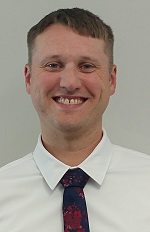
Student: Caldwell Charlet
Faculty Mentor: Seockmo Ku
Project Title: Whole Cell Biocatalysis of Major Ginsenosides in Ginseng Beer Wort Using Saccharomyces
Cerevisiae
Abstract: Korean (Panax ginseng) and American (Panax quinquefolius) ginseng are greatly valued plant medicines in the nutraceutical market. Ginseng
contains phytochemicals such as triterpenoid saponins (a.k.a. ginsenosides), acidic
polysaccharides, polyynes and volatile oils. Among them, ginsenosides are regarded
as the key bioactive substances responsible for functional activities (e.g., anticancer, antitumor, antistress, anti-microbial, anti-fungal and antioxidant effects).
As major ginsenosides, Korean ginseng contains Rb1, Rc, Re, Rg1 and Rb2; American
ginseng contains Rb1, Re and Rc. Despite the diverse functional properties of major
ginsenosides in ginseng, the physiological applicability of ginsenosides is limited
due to their high molecular weight and poor lipid bilayer permeability. Therefore,
this paper details a process developed to biotransform major ginsenosides to more
bioavailable deglycosylated ginsenosides via yeast biocatalysis accompanied by wort
fermentation (beer production.) To the best of our knowledge, this is the first work
describing bioconversion of major ginsenosides via wort fermentation.

Student: Abigail Choisser
Faculty Mentor: J. Warner Cribb
Project Title: Insight into Interrelationships among Density, Viscosity, Crystallinity and Chemical
Composition within Hypocrystalline Intermediate Lavas, Mt. Hood Volcano, Oregon
Abstract: Studying relationships between rheological properties, mineralogy, and chemical composition
of magmas is important to understanding numerous processes, such as magma buoyancy,
magma mixing, and rate of magma emplacement. This study examines the relationships
between density, viscosity, chemical composition, mineralogical content, and percent
crystallinity in intermediate magmas at Mt. Hood volcano in the Cascade Range. Most
are two-pyroxene andesites (SiO2= 58 – 61 wt %) and basaltic andesites (SiO2 = 52
– 58 wt %). Temperature-dependent viscosities were calculated using the Giordano et
al. (2008) method. Melt densities were calculated using partial molar volumes of oxide
components using the Bottinga and Weill (1970) method. Both density and viscosity
were calculated at temperatures ranging 700oC to 1200oC. Densities span 2.41 g/cm3
at 1200oC to 2.54 g/cm3 at 700oC. Viscosities span log η = 2.23 PaS at 1200oC to log
η = 12.62 PaS at 700oC. Percent crystallinity of XRD sample spectra vary from 63%
crystalline at log η = 2.23 PaS (SiO2 = 52.49 wt %) to 55% at log η = 3.58 PaS (SiO2
= 61.34 wt %). Density and viscosities when graphically correlated to crystallinity
and chemical composition, provide insight into interrelationships among these physical
properties within the volcano's pre-eruptive magmatic system.

Student: Joseph Gulizia
Faculty Mentor: Kevin Downs
Project Title: The Influence of Kudzu (Pueraria montana var. lobata) Age on In Situ Rumen Degradation
Abstract: Early and late season kudzu (Pueraria montana var. lobata) leaves were collected to analyze dry matter (DM), crude protein (CP), acid detergent
fiber (ADF), and neutral detergent fiber (NDF) in situ rumen disappearance to assess
kudzu quality. Four studies were conducted during different growing seasons [2 repeated
early season (ES); 2 repeated late season (LS)] to determine age variability effects.
Kudzu collected from 7 middle Tennessee counties were incubated in the rumen for designated
lengths of time (0.25, 1, 12, 24, 36, 48, and 72 h) to determine total rumen degradation
(%) and rate of disappearance (% / h). Data were analyzed as a randomized complete
block design (RCBD) with repeated measures. Regression analysis was used to determine
degradation rate. Overall season effects (across incubation times) for dry matter
disappearance (DMD) were significantly different (P < 0.0001). Significant season
by incubation time interactions were exhibited for total DMD at 12 (P < 0.0001), 24
(P = 0.0004), 36 (P = 0.0055), 48 (P = 0.0209), and 72 h (P = 0.0384) incubation,
with an average rumen degradability of ES kudzu being 9.75% higher than LS between
12 and 72 h. Slope regression between 1 and 24 h determined a rumen degradation rate
of 2.41% / h across both seasons, with no significant seasonal difference (P = 0.3396).
These results are indicative that ES kudzu is more highly rumen degradable than LS,
as evidenced by the significant season by incubation time interactions between 12
and 72 h of incubation. Although there are significant seasonal effects on kudzu DMD
during certain incubation times, DMD overall for ES and LS is still indicative of
high rumen degradability with an average of 81.45% at 72 h across both seasons. Season
effects were minimal for NDF, ADF, and CP rumen disappearance.

Student: Hannah Hall
Faculty Mentor: John Dubois
Project Title: Inducing Somatic Embryogenesis of Grape (Vitis aestivalis "Norton/Cynthiana") Callus
Abstract: Vitis aestivalis ‘Norton/Cynthiana' is a hybrid commercial wine grape that is not reliably propagated
by vegetative propagation. Tissue culture provides an alternative method for plant
propagation. Due to a fungal endophyte that exists within the plant V. aestivalis
obtaining unorganized callus cultures is a major challenge. With the Wilson et al.
(2016) protocol fungus-free callus cultures can be obtained from explant tissue. The
next step towards plantlet regeneration is inducing somatic embryogenesis from callus
cultures. In our most recent study, callus cultures of two-plus years-old, 7-8 months-old,
and four-months-old were plated onto new media types containing different combinations
of plant growth regulators. Experimental media types contained varying levels of auxin
(2,4-Dichlorophenoxyacetic acid or naphthoxyacetic acid) and cytokinin (benzylaminopurine),
in the attempt to induce somatic embryogenesis. Phenylalanine was also added to increase
rates of embryogenesis. Results showed no embryogenic responses. Media containing
Murashige & Skoog salts showed higher rates of stress and death. Media with Lloyd
& McCown salts produced compact callus with elongated growth. Younger callus showed
a faster response to treatment, producing elongated and compact structures soon after
receiving growth regulator treatment.

Student: Kaylee Lindgren
Faculty Mentor: Nikki Jones
Project Title: Service Dogs in the Classroom for Children with Autism
Abstract: In the United States, approximately 1 in 59 children born are diagnosed with Autism
Spectrum Disorder (ASD) (Baio et al., 2018). Children that are diagnosed with ASD
experience cognitive, emotional, and social deficits, resulting in antisocial interactions,
negative behavior, and repetitive tendencies. Additionally, medical complications
can be present in a child diagnosed with ASD. Multiple studies have shown service
dogs to be beneficial to the cognitive, social, emotional, and physical development
of a child with ASD. These benefits are present not only at home, but in an educational
setting as well. Current federal policy permits the use of service dogs in public
locations, but due to inconsistencies, lack of support, and enforcement in the legislation,
parents are still having difficulties accessing aid of service dogs inside of the
classroom. Furthermore, Tennessee policy regarding service dogs is outdated, magnifying
the barriers in which parents have to go through to access the use of ASD service
dogs inside of the classroom. Until federal and state policies can be amended to ensure
service dogs will be permitted in the classroom, children with ASD and other disabilities
will be at an educational disadvantage.

Student: Sabrina Spicer
Faculty Mentor: Kevin Bicker & Erin McClelland
Project Title: Towards a Clinical Antifungal Peptoid; Investigations into the Therapeutic Potential
of AEC5
Abstract: Cryptococcus neoformans is a fungal pathogen that causes cryptococcal meningitis
in immunocompromised individuals. Current therapeutic options for cryptococcal infections
are limited. Existing antifungal treatment plans have high mammalian toxicity and
increased drug resistance, demonstrating the dire need for new, non-toxic therapeutics.
Antimicrobial peptoids are one alternative to combat this issue. Structurally similar
to antimicrobial peptides, AMPs capitalize on the efficacy of the innate immune response
inherent of antimicrobial peptides while decreasing toxicity and drastically improving
in-vivo stability. Our lab has successfully identified a tripeptoid, AEC5, with promising
therapeutic potential against Cryptococcus neoformans. Studies into the mechanism
of action, in-vivo half-life, and sub-chronic toxicity have further characterized
AEC5 as a viable antimicrobial. Most notably, these studies determined an in-vivo
half-life of 25 hours, as well as no in-vivo toxicity. This research represents an
important step in the characterization of AEC5 as a practical treatment option against
Cryptococcus neoformans, and also the development of new antifungal therapeutics as
a whole.
Posters at the Capitol 2018
| Student |
Class |
Mentor |
Dept |
College |
Title |
| Maia Council |
Senior |
Molly Poleskey |
History |
CLA |
Recover Nashville's Past |
| Brooke Fitzwater |
Senior |
Dennis Mullen |
Biology |
CBAS |
Habitat Selection by 2 Chilean Subtidal Blennies under Predation Pressure in a Chilean
Costal Ecosystem |
| Natalie Foulks |
Senior |
Kathryn Blankenship |
HHP |
CBHS |
Narrative Discourse Performance in Older Adults |
| Lauren Hennessee |
Junior |
David Carleton |
Global Studies and Human Geography |
CLA |
Why Do Some States in the Middle East Have a Higher Level of Democratization than
Others? |
| Janie Kullmar |
Senior |
Kathryn Blankenship |
HHP |
CBHS |
Word Learning in Authentic Versus Explicit Conditions |
| Salman Rahmani |
Senior |
Nate Callender |
Aerospace |
CBAS |
Flow Control of 3-Dimensional Bodies Utilizing CFD |
| Benjamin Yost |
Soph |
David Carleton |
Global Studies and Human Geography |
CLA |
Understaning the Modern Stage of International Adoption |
 Audrey Lauerhass
Audrey Lauerhass Isaiah Kam
Isaiah Kam Rose Gutierrez
Rose Gutierrez Eden Anderson
Eden Anderson Sydney Robbins
Sydney Robbins Cole Huddleston
Cole Huddleston Tori Bascou
Tori Bascou Lindsey Tran
Lindsey Tran


























